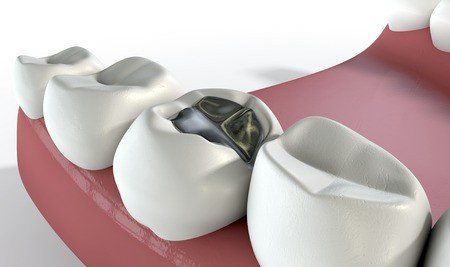Is Pain Normal After a Filling?
The purpose of a filling is correcting cavities and tooth decay while also easing any discomfort it might cause. With that in mind, why is it that some patients experience pain in their tooth after getting a filling done? There are many reasons why patients feel sensitivity or pain after their tooth was filled. For some, the pain is just a reaction to the repair process. Other cases may simply be that the filling needs adjusting, or another part of the tooth needs to be repaired. Luckily, there are plenty of options available to patients coping with post-filling tooth pain.
Reasons for Post-Filling Pain
It’s normal to experience sensitivity or pain in a filled tooth, given a dentist just drilled into it, and most discomfort fades within one or two days. However, if several days have gone by, and you’re still experiencing pain or sensitivity, this could have been caused by issues with the tooth or with the actual filling.
A common reason for tooth pain after a filling is the filling not being positioned right and is therefore interfering with the patient’s bite. Fillings that are too high could result in malocclusion, which keeps the teeth from properly fitting together whenever the patient bites down.
The reason for tooth pain could also be the kind of filling the dentist uses. For instance, sensitivity is common when a filling comprises of composite resin material. One study in the Journal of Conservative Dentistry noted that sensitivity can result from the filling contracting a bit and thereby creating a gap underneath it. There are a lot of ways to eliminate or cope with sensitivity caused by a composite filling, including using another material or changing the placement method for the filling.
How to Approach the Pain
If a week has passed since the filling, and you still feel pain whenever you eat, bite down, or open your mouth, it’s time to schedule a dental appointment immediately to find and fix the problem. If the filling is too high, and malocclusion has formed, the dentist can adjust filling’s height to allow you to bite down with ease and comfort.
If you have sensitivity caused by a composite filling, then your dentist may suggest replacing the original filling with another material. If it’s exposed pulp or an inflamed nerve that’s behind the discomfort, you may need a root canal, or the dentist may have to extract the damaged tooth entirely and replace it with a bridge or implant.
To prevent cavities from developing at all, you need a solid home oral healthcare routine, which should include brushing twice per day to strengthen your teeth’s enamel and flossing daily as well. Regular visits to the dentist are also important for spotting potential problems before major treatments are required.
Are you experiencing pain after having had a filling? Then it
is time to see your dentist ASAP! If you want to find out how you can save as
much as 20 percent off your dental bills, consider signing up for our New Hampshire
discount dental plans
for families, individuals, and business owners. For more
information, please click here.
Copyright: albund
/ 123RF Stock Photo











